#there are not. due to the fact that they are a north american species.
Explore tagged Tumblr posts
Text
i think it’s fun how i’m too neurotic to write historical fiction but then the people who get published won’t use the internet to find answers to such questions as “are there coyotes in sweden”
#there are not. due to the fact that they are a north american species.#and it would seem we’ve been lucky enough to avoid some weirdo just turning them loose in scandinavia#babbles#i’m mad because i’m mostly enjoying this book but girl!!!#no one is worried about coyotes swimming out to this fictional swedish island!!!!!!
40 notes
·
View notes
Text
Ecology is one of those disciplines where there is just so, so much we don't understand yet. Yes, we know that the many species within a given ecosystem have a widespread, complex network of interrelationships, but we only have the barest understanding of a fraction of them. It's like having a symphony where you've heard everyone playing, but you only have some notes from some of the musicians' sheet music, and so you can't yet put together how it all works.
In this case, we're seeing just how important northern pocket gophers (Thomomys talpoides) are to their ecosystems. After the devastating eruption of Lawetlat'la/Loowit/Mt. St. Helens in May 1980, the land was left burned and covered in tons of ash and tephra. While some zones further out from the mountain were replanted by timber companies, the area directly around the eruption site has been allowed to recover naturally because this offers North American scientists an unprecedented chance to see how an ecosystem recovers after such a large eruption, at a place that is easily accessible.
When a small number of gophers were returned to an ash-covered area of the mountain for just twenty-four hours in 1982, they kicked off what would be a forty-year study in ecological resilience. In areas with no gophers, there were only a few struggling plants born from seeds transported by birds, while in places where the little mammals were able to burrow and turn over dirt, scientists found 40,000 individual plants. This was due to the fact that the gophers were able to free soil fungi and other microbes beneath the ash and give them a chance to repopulate closer to the surface where they normally would be found. In turn, seeds of plants that had mycorrhizal relationships with the fungi, or which otherwise benefited from the increased microbial biodiversity, flourished.
And forty years later, the pattern still stands, with the gophers' work reverberating to this day. If one small mammal can have such a profound effect in a miniscule amount of time, imagine what happens when we reintroduce extirpated species to other eplaces. The volcanic area may be left to repopulate naturally as scientists continue to study it, but there are countless badly damaged ecosystems in need of restoration. The results of this experiment clearly support the importance of returning as many native species to an ecosystem as possible, because even those that may seem insignificant have invaluable contributions to make to the whole.
#nature#wildlife#animals#ecology#environment#science#conservation#scicomm#pnw#pacific northwest#Mt. St. Helens#Lawetlat'la#Loowit#habitat restoration#restoration ecology#gophers#Washington#good news
563 notes
·
View notes
Text
Damon and Diana, Snake and Chameleon
in the context of chapter 1 i wanted to expand on some of the animal symbolism, particularly damon's symbol of a snake and diana's of a chameleon. buckle up yall!
while the biblical snake symbolism is obvious, i think lots of meaning can be derived from real world knowledge--in particular, the familiar image of a snake shedding its skin. snakes enter periods of heightened aggression when molting due to the sensitivity of their new skin, and i think this will be reflected by damon becoming much worse in the name of defending himself before he changes for the better. his initial distrustful mindset was proven right, the second he even *began* to trust someone it blew up in his face. while he was crying for a moment in the face of eva's death, this sorrow was quickly overrun by frustration and anger, particularly at diana's words.
additionally, while i'm not sure if exact genus/species of certain animals were intended or will become important to interpretation, i'd like to draw a connection between damon's snake symbol and a certain genus. from the green color and his american origins, i think he can be connected to opheodrys, a common genus of green snake from north america coming in two species of rough or smooth variety. these snakes are not commonly kept as pets due to their standoffish and defensive nature around humans, making them prone to biting. despite this, they're non-venomous and generally harmless. damon makes it clear when confronted that he does not intend to harm anyone. in fact, his monologues show he thinks much more about how he would respond if someone were to attack *him* instead, noting the physical advantage some of his classmates have (rough/smooth green snakes are very small). we can even tie these traits of non-venom back to the prologue trial, where he appeared very hostile despite genuinely thinking he was helping. and of course, a connection can also be made to damon's general personality of being outwardly cold when deep down he's just... a guy who gets easily embarrassed.
now onto diana! first off i was surprised she actually mentioned her animal and how it relates to her, i thought the motifs were going to be more of an unspoken thing. makes me wonder if any other characters will mention their animals. anyway, fun fact! chameleons don't change color to camouflage, they do it for thermoregulation and social signaling. for diana, i'm more concerned with social signaling, as chameleons can change into very bold displays of colors to communicate dominance, as paralleled by diana's bold display at the end of the first trial with the intention of rallying the others behind her. this could be a stretch, but diana's darker/bold color pallet could be a reference to the potential spectrum of colors that a chameleon would display under stress.
i find it funny though, that while diana says that she will adapt like a chameleon, keeping chameleons in captivity is notoriously hard due to their highly specific environmental requirements- be it temperature, humidity, or lighting, they're easy to accidentally kill. diana may claim with a brave face that she has the strength to fight this killing game no matter the struggle, yet someone with the stress sensitivity of a chameleon in a situation like this is doomed to buckle.
anyway...can you tell they're my two favorite characters. antag diana im so ready for you if you're real
127 notes
·
View notes
Note
Do you have any cool facts about Missouri wildlife?
I'd love to share something with my Midwestern friends, and thank you for always updating this blog!
I don't know if i have any Missouri animal facts per se... but I can share some of the state symbols with everyone.
We moved around a lot when we first came to the U.S. and we lived briefly in Kansas City. I have great memories of going to the Ozarks at Christmas time (near Lake of the Ozarks). I specifically remember following woodpeckers and deer around the forest in the snow.
SOME MISSOURI STATE SYMBOLS:
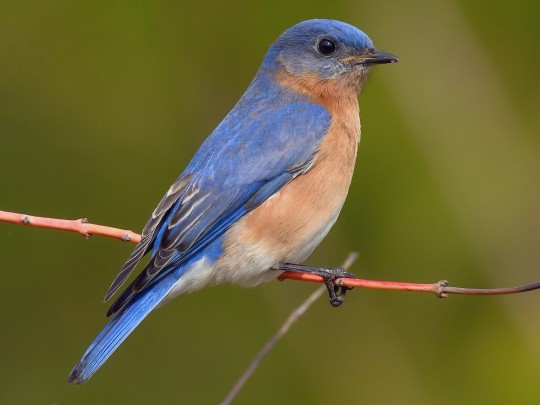
STATE BIRD: Eastern Bluebird (Sialia sialis), family Turdidae, order Passeriformes, found across much of the central and Eastern U.S., SE Canada, and NW Mexico
Changes in land use lead to drastic declines in Eastern Bluebirds after the early 1900s. They have recovered in many places, due to "bluebird trails", reestablishing appropriate habitat and nest box campaigns for public and private property.
Find out more: NestWatch | Eastern Bluebird - NestWatch
Blue birds are in the thrush family, Turdidae, along with American Robins.
They eat mainly worms, insects, and other small invertebrates (but also take berries for part of the year).
Bluebirds are cavity nesters, nesting in tree holes usually, but will readily take to properly constructed and placed nest boxes.
Males (pictured) are brighter blue, and females are a more muted and faded blue or bluish gray.
photograph by Keith Kennedy
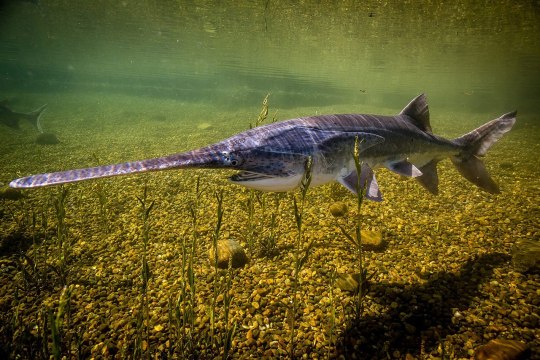
STATE AQUATIC ANIMAL: American Paddlefish (Polyodon spathula), family Polyodontidae, order Acipenseriformes, found in various parts of the Mississippi River basin
This species is the only member of this family that still exists. They are most closely related to sturgeons. This order, Acipenseriformes, is considered one of the most evolutionarily primitive groups of ray finned fishes.
They do not have scales, and their skeleton is mostly cartilaginous.
They are filter feeders. Their heads and rostrums are covered with thousands of sensory receptors, which help them locate zooplankton swarms.
They are considered "vulnerable" due to overfishing, habitat degradation and destruction, and pollution.
photograph via: US Fish & Wildlife Service
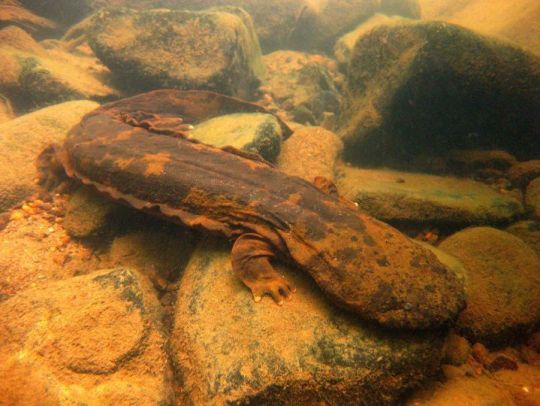
STATE ENDANGERED ANIMAL: Eastern Hellbender (Cryptobranchus alleganiensis), family Cryptobranchidae, eastern United States
The largest salamander in the Americas, it grows to a total maximum length of up to 40 cm (15.7 in).
Though nationally it is considered to be just "vulnerable", in some states (like Missouri), it is "endangered".
photograph by Mark Tegges
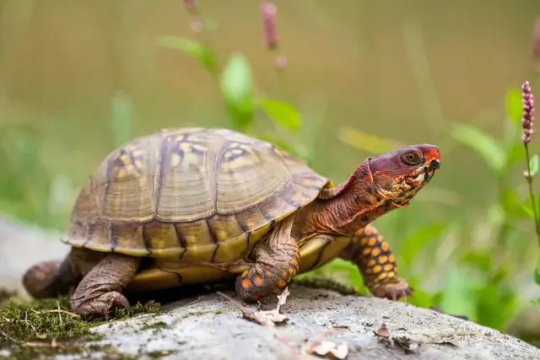
STATE REPTILE: Three-toed Box Turtle (Terrapene triunguis), family Emydidae, found in the South-central and Southeastern U.S.
This specie shas been considered to be a subspecies of the Eastern Box Turtle, T. carolina (and still is by some herpetologists).
These turtles are terrestrial, but are not closely related to tortoises. They are in the same family as aquatic sliders, pond turtles, cooters, map turtles, and painted turtles.
photograph by Noppadol Paothong
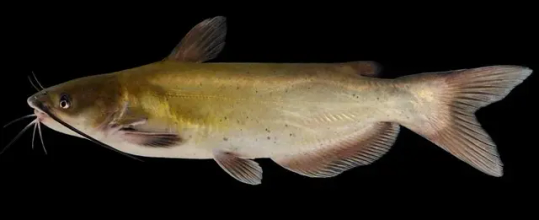
STATE FISH: Channel Catfish (Ictalurus punctatus), family Ictaluridae, order Siluriformes, found in freshwater habitats in the eastern and southern US, southern Canada, and northern Mexico
They are widely caught, and have been introduced into waterways in other parts of North America and around the world. (In some places they are considered an invasive species).
photograph via: Missouri Dept. of Conservation

photograph by Brian.gratwicke
#Acipenseriformes#paddlefish#fish#ichthyology#box turtle turtle reptile#herpetology#bluebird#thrush#bird#ornithology#north america#hellbender#salamander#amphibian#animals#nature#catfish
181 notes
·
View notes
Text
141 Bear! Edition
Cause what if 141 were bears?
Including bear facts ! Why? Because bears are cute. 💕
Ghost: Spirit Bear "Kermode Bear"
Ursus americanus kermodei

A subspecies of the American Black Bear that lives exclusively on the coastal shores of British Columbia, Canada.
They are not actually albinos, but instead have a recessive gene that causes the white pigmentation to their fur and eyes. For example, two black 'kermode bears' with the recessive gene can produce a white furred bear.
The white fur is thought to be advantageous towards hunting salmon, as it is theorised that the white colour makes it harder for fish to evade them.
Soap: Sun Bear
Helarctos malayanus
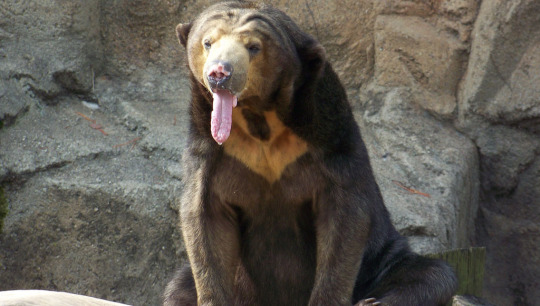
An Asiatic bear that stands as the smallest of all bear species, ranging from northeastern India and extending south to Bangladesh, Myanmar, Thailand, Cambodia, Laos, and Vietnam to Brunei, Indonesia, and Malaysia.
They measure between 4-5 ft from tail to snout and weigh between 55- 145 lbs. It is an excellent climber that is known to be the most arboreal of all bears.
Their name is derived from the orangey- cream colour 'sun' crest on their chest. Another name for them is Honey Bear or beruang madu, in Malay/Indonesian due to their love of feeding on honey combs.
Gaz: Cinnamon Bear
Ursus americanus cinnamomum
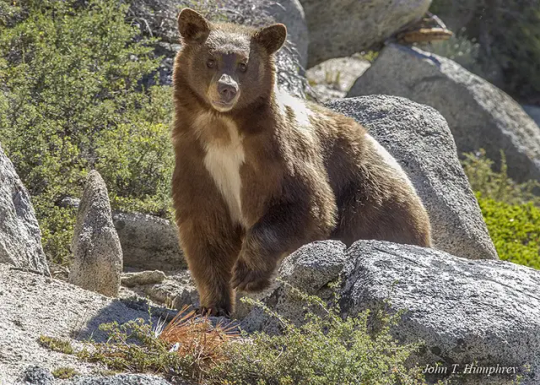
Another subspecies and colour morph of the American Black Bear. It is thought to exist and interbreed with the black coloured American Black Bears.
The name is derived from the brown to red-brown fur colour that resembles cinnamon. It's coat colouration is theorised to be a mimic of grizzly bears who may also cohabit the same areas.
Price: Grizzly Bear "North American Brown Bear"
Ursus arctos horribilis

Despite being known as the 'grizzly bear' or 'grizzly', the bear is categorised as a subspecies or pop. of the Brown Bear, a species that originates in Eurasia. It is thought that this subspecies/pop. migrated to North America between 177,000 BP ~ 111,000 BP.
There are other morphological forms of brown bears in North America also termed as 'grizzly' that were once considered subspecies but is now synonmised with Ursus arctos horribilis, such as the "Kodiak Bear and the "Alaska Peninsular Bear". The 'grizzly bear' historical range starts from Alaska to Mexico, taking in consideration of past subspecies that are now extinct, though it's current population is situated mainly in North America.
It's name came from the descriptor 'grisley' which can be read as 'grizzled' - grey haired, or "grisly" -fearsome, inspiring, though it was formally classified as U. horribilis, for it's terrible character in 1815.
+
*all facts taken from wiki. If there are any mistakes let me know!
#call of duty#cod mwii#cod mwiii#call of duty modern warfare#bears#bear facts#john soap mactavish#captain price#kyle gaz garrick#simon ghost riley#cod mw2
37 notes
·
View notes
Note
hii! im trying to get over my phobia of bugs, so i decided i would try and see the good side of them :]
if its okay, could you share with me some of your favourite facts about bugs, and/or some cool images of bugs? no pressure, though! ^_^
oh, i'm so happy and proud of you anon! as a very avid bug lover, i always love hearing people try to be more open to them, even just slightly!!
a few fun facts:
a single dung beetle can move about 1141 times it's own weight! it's like if a human pulled SIX double decker buses, all on their own!
male stoneflies are like, the gym guy of the bug world - sometimes they'll do pushups as a way to impress a potential mate!
male giraffe weevils use their looong necks to fight eachother, much like actual giraffes!
some tarantulas have been found to essentially keep frogs as pets! the spider will offer safety and protection to frogs while a frog will eat any insects that may try and attack the spiders eggs!! (this habit has also been seen in some other spider species too!)
and here's some photos!!


rosy maple moth (dryocampa rubicunda), also known as the great silk moth! this species is a small north american moth. it's recently surged in popularity due to it's adorable colours and tiny size, even having plushies made after it!
sources: image one, image two


humming bird hawk moth (macroglossum stellatarum) is named for it's resemblance to the humming bird as they feed on the nectar of tube shaped flowers using their long proboscis while staying in the air. this species is found across temperate areas of eurasia such as portugal, japan and spain!
sources: image one, image two


cecropia moth (hyalophora cecropia), aka a giant silk moth is the largest native moth found in north america! their wing can even span up to five-seven inches (13-18 centimeters) wide!
source: image one, image two


the peacock spider (maratus volans) is a jumping spider native to australia (my country!!) with only one species residing in china! much like the bird they're named after, peacock spiders will display their bright feathers as a mating technique, paired with a dance! it is widely believed that females will kill a male if they find their dance unsatisfactory but this is fortunately, for the men, untrue! she will instead ignore him or move her abdomen side to side to display her disinterest. the maratus sarahae (first image) is one of the largest species! image two is a maratus azureus!
source: image one, image two


sabertooth longhorn beetle (macrodontia cervicornis) are some of the largest beetles in the world! it spends most of it's life in a larval stage which can last up to 10 years!! after which it will only live a few more months in which it will reproduce. sabertooth larvae are planted under the bark of dead or dying softwood trees as they will burrowing inside it!
source: image one, image two
i hope this was enjoyable!! i had a lot of fun doing this hehe

#playtime answers#sfw agere#age regressor#age regression#agere blog#sfw interaction only#sfw agedre#agedre#sfw agedre blog#agedre blog#sfw age regression#bug agere#agere bugs#bug#bugs#insects#entomology#tw spiders#jumping spider#arachnophobia#arachnids#spiders#cw spiders#cw arachnophobia#cw arachnid#tw arachnophobia#tw arachnids#tw bugs#tw insects#cw bugs
12 notes
·
View notes
Note
Ahoi, horse question -
I knew most facts on your list but it’s a fun read, thanks for that.
I also knew that horses can overeat themselves to death but I always wondered:
What’s different with wild horses, how do they regulate themselves? And didn’t they occasionally eat bad plants and mushrooms, too, that poisoned them?
Wild horses can and do poison themselves by eating toxic plants, it's just that herds of wild horses are remarkably rare to see EVER, so the whole "toxic plants in reach of horses" discourse is almost entirely limited to domestic settings. Tansy, especially, is a poisonous herb that can appear to blend into other safe grasses and herbs a horse may eat, and the horse will eventually die of colic (intestinal spasms that cause the horse's GI tract to literally tie itself in knots, cut off bloodflow, and result in an agonizing death; it's one of the most common causes of premature death in horses). That's why responsible owners pay out the nose to have their paddocks ID'd and and cleared of any toxic plants the horse may accidentally graze on. Most experienced horse/ranch owners practically qualify for an honorary botany degree, because the best owners learn how to identify most - if not all - of the toxic plants their horses may encounter in their area, and keep their horses far away from them until/unless the plants can be removed.
With many wild horses you may see in photos, those are the ones that made it to adulthood. Horses are prey animals, and so wild horses you see in film or pictures - even babies - may not have survived to the publication of the picture you're looking at. As prey animals, only the strong and lucky survive to old age without human intervention on some level to improve their mortality rates. Foals are just as vulnerable to predation as baby deer, and usually can't survive if they're injured or sick in any way that keeps them from keeping up with their herd. The herd usually follows the dominant mating stallion, who typically decides when it's time for the herd to move (unless the mares decide he's not worth listening to, which happens sometimes). There aren't really that many places in the world where you'll see truly wild horses, so most people don't think of them as prey animals that are as vulnerable to environmental dangers as any other prey animal.
It's well to remember, too, that pretty much all true-blue, wild horses today are the descendants of domestic horses to some degree. In the American West, wild herds of Mustangs were captured by the US Army and westward-bound settlers in the 18th and 19th centuries so voraciously that wild mustang populations pretty much went entirely extinct (Spirit: Stallion of the Cimarron is very much taking place during the final years Spirit will ever know freedom as a wild animal. A few years later, the horses will end up broken and domesticated by soldiers if they aren't tamed and separated by other humans, and there will be no more mustang herds to see on the western frontiers for well over a century).
All horses are thought to descend from the OG horse, the Przewalski's Horse, aka Those Cave-Painting Horses:

The very first true horses to ever appear were initially native to what is now steppes and grasslands in Mongolia and Russia - so basically Central Asia. It's theorized that, thousands of years ago, these horses gradually migrated into North America via the Bering Land Bridge that once joined North America to what is now Russia, and evolved and were domesticated into now what we recognize as the American Mustang:

American Mustangs don't bear a very clear resemblance to their Przewalski ancestors due to thousands of years of domestication, separation from their original species, and selective breeding practices by humans.
Both the Przewalksi's Horse and American Mustangs have recently been on the rise thanks largely to conservation methods when it comes to wild populations of them. The Przewalski's Horse was so rare that it was functionally extinct in the wild in the 1960s, with the only significant populations of surviving horses being kept in zoos and wildlife conservatories. Now, the horses have made such a big comeback that some of the first wild herds have been released back into their home environment in Central Asia.
The main difference is in how the horses are treated by their human protectors, or if they have humans looking after them at all. Domestic horses that are raised privately and kept essentially as very expensive pets spend their entire lives having humans providing them with most, if not all, of their required resources and care, so they don't typically get the same experience with food that they would in the wild. Herds of wild horses can have roaming territories of hundreds, if not thousands, of hectares and be comprised of a dozen or more individual horses, while most domestic "pet" horses are usually limited to much tighter pastures that only span a couple of acres, maybe in the double or triple digits if there's money-money involved, but the horses still largely have their dietary needs and daily routines decided for them by their owners - not natural instinct and rearing by other horses.
A horse really can't get everything it needs nutritionally or behaviorally in a paddock-and-stable setup without humans to feed and look after them, because they don't have a huge range of places they were evolved to travel between to sustain their health; horses, like other ungulates, need vital minerals like those found in natural salt deposits to maintain their health, and the soil in your horse's paddock may be so nutritionally deprived that the grass your horse grazes on doesn't actually contain enough nutrition for the horse to survive without supplementation to their food. They also need more than grass to be nutritionally stable; horses will seek out and eat fruits, veggies, grains, herbs, and especially love molasses and other forms of sugar for their sky-high amounts of carbohydrates (and because they taste good). But they don't know how to properly regulate what they eat when presented with an unlimited supply without a human to handle the portion control side of things, so it's easy for them to overeat to the point that it kills them.
Wild horses are born and raised feeding and taking care of themselves and each other in highly maternal, matriarchal communities (mostly females of reproductive age and their babies with only one or two adult breeding males; the stallions are usually the ones that lead the herd, but the mares really have the final say). Aside from eating something they didn't know was toxic, wild horses learn from their peers and elders when it comes to where they can find the best food and when, and rely heavily upon their understanding of their territory/range when it comes to knowing where and what they should eat to stay healthy. They also have to share resources with other horses in their herd, and don't get access to huge 200lb barrels of oats or 150lb bales of pure feeding hay, so they usually don't find opportunities like domestic horses do to find Enormous Stores Of Unprotected Food and make themselves sick.
Horses have a muscle at the top of their stomachs referred to as a French Tie. It literally makes it physically impossible for a horse to throw up, even if they've eaten something bad or overeaten and would stand a better chance at surviving if they could spit up what they ate. Being grazing animals with long necks, they can't have the internal structure to throw up with, because otherwise they would never be able to get their food or water from their mouths to their stomachs. Gravity would prevent them from being able to eat without constantly raising their heads up to gulp down food like an alligator with a chicken drumstick (seriously, try taking a drink of water while you're dangling upside down; that's why NOT being able to regurgitate is more valuable for horses), which is not what grass-eating animals want to do: grass and plant life is very hard to digest efficiently, horses only have one stomach compared to other ungulates like cows, and horses and similar grazing animals spend so much time chewing on their food in order to make it easier to digest and draw nutrition from that it generally makes their food intake pretty steady for their digestive systems to cope with.
Domestic horses that live their lives in paddocks and barns know where things like the grain store/feed room are, and don't really understand why we stingy humans will only give them a scoop or two of oats as a treat and not give them as much as they want 24/7. Their instincts almost always are to graze, graze, graze, so what's wrong with going face-down in a barrel full of oats? It's just tasty food!
Except we know that overeating means they can't puke up what they don't need or can't digest the way your dog can if they managed to rip open your 50lb bag of cat food while you were away at work. They don't know better, and there's no way to teach a horse NOT to eat when food is right in front of their noses, so farm-horses essentially have their entire diets managed for them to keep them safe and healthy, while wild horses just don't have access to that sheer quantity of unguarded food to overeat at all under typical circumstances.
14 notes
·
View notes
Text
Bigfoot on TV Cartoons
The mythical Bigfoot, an ape-like creature rumored to live in North American forests, has gained popularity as a character in television cartoons. Both kids and adults frequently choose Bigfoot, a legendary figure known for his enormous feet and enigmatic aura, as their favorite. Cartoons portray Bigfoot in a way that combines mystery, adventure, and humor, contributing to the myth's ongoing popularity. TV cartoons often employ the character of Bigfoot to explore issues of the unknown and the misunderstood. Numerous television shows portray Bigfoot as a kind giant with a kind heart, rather than as a terrifying monster. The audience perceives the mythology as a sympathetic figure, demystifying it. Television shows like The Simpsons, Scooby-Doo, and Gravity Falls have exploited Bigfoot to captivate viewers with comedic and suspenseful plots that frequently convey deeper themes of acceptance and friendship.

Cartoons frequently parody the notion that Bigfoot is a misunderstood species, highlighting racial discrimination and a fear of the unknown as societal issues. With this strategy, artists can bring attention to significant societal concerns in a way that is both approachable and enjoyable. For instance, in certain episodes, characters may initially fear Bigfoot before realizing that the creature is actually gentle and misunderstood. This storyline arc not only imparts important lessons about empathy and tolerance, but also teaches important lessons about humor. The fact that Bigfoot is often associated with adventure adds to the creature's appeal in cartoons. Bigfoot's enigmatic nature makes for intriguing narratives involving inquiry and revelation. Cartoon characters frequently embark on thrilling adventures to find Bigfoot, captivating young viewers. When paired with the humorous aspects of animation, this spirit of adventure produces captivating content that piques viewers' interest. Furthermore, cartoon depictions of Bigfoot frequently incorporate a range of imaginative interpretations. While some shows emphasize its elusive nature and craft narratives full of deft turns and twists, others emphasize its size and strength for humorous effect. This representation flexibility allows for a variety of storytelling possibilities, catering to a wide range of age groups and interests.

Cartoon Bigfoot can represent popular intrigue with cryptids and the paranormal in addition to providing entertainment. The creature's appearance in animated shows reflects society's general interest in the unexplained. Cartoonists capitalize on this curiosity by bringing Bigfoot into their stories, giving viewers an entertaining yet thought-provoking look at myths and folklore. Bigfoot plays a variety of roles in TV cartoons, including social commentary, humor, and adventure. The character has been a mainstay of animated programs due to its adaptability to different storytelling requirements, as evidenced by its lasting popularity. Cartoons maintain the myth of Bigfoot alive in the hearts and minds of viewers for years to come by means of imaginative depictions.
7 notes
·
View notes
Note
RAINBOW COLORFUL BUG
AHAHAHAHHAHAHAHAHBSBWJAHHA
i’ll give you one for a few orders :)
Coleoptera (beetles): The Rainbow Scarab (Phanaeus vindex) is a North American dung beetle that likes to hybridize with Phanaeus difformis (also colorful, but in a different way). We would live a much grosser world without dung beetles, as the Australians learned when cows were brought to the continent. Without dung beetles, dung gets recycled into the soil far slower.
Lepidoptera (butterflies and moths): Madagascan Sunset Moth (Chrysiridia rhipheus) is from Madagascar (mind blowing). Due to its shape and impressive colors it is much sought after by collectors. The black parts of the wings are actually the only pigmented parts, while the rest is reflected light.
Hemiptera:



take a close look at these guys! (genus Agrosoma) they’re beautiful. they live in central america and the last picture is a nymph (baby bug that doesn’t do metamorphosis)
Orthoptera (crickets, katydids and grasshoppers): rainbow grasshopper (Dactylotum bicolor) is native to the western great plains of north america. sry i don’t really uhhhhh have facts for grasshoppers they’re not as interesting to me as bees and stuff
Hymenoptera (bees wasps and ants): The ruby-tailed wasp (Chrysis ignita) is a cuckoo wasp that lays its eggs inside the nests of a few species of potter wasps. They don’t have a stinger and are found in europe and asia.
#beetles#entomology#bugs#insects#insect#bug facts#beetle#wasps#wasp#leafhopper#hemiptera#moth#moths#grasshopper#grasshoppers
6 notes
·
View notes
Text
Anyways, here are my favorite bears
These are not all species of bears, just my faves. Also, no order cause I can't brink myself to rank these babies. Under the cut cause longpost
Beggining with a lesser known one, the only bear species that exists in south america is the Spectecled Bear (also known as the Andean Bear)
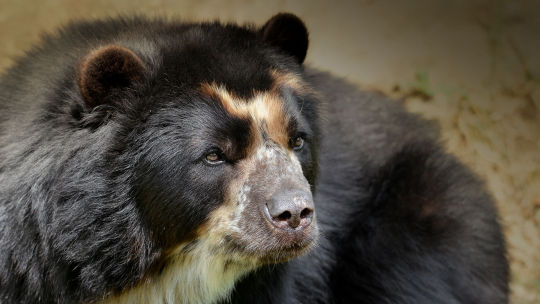
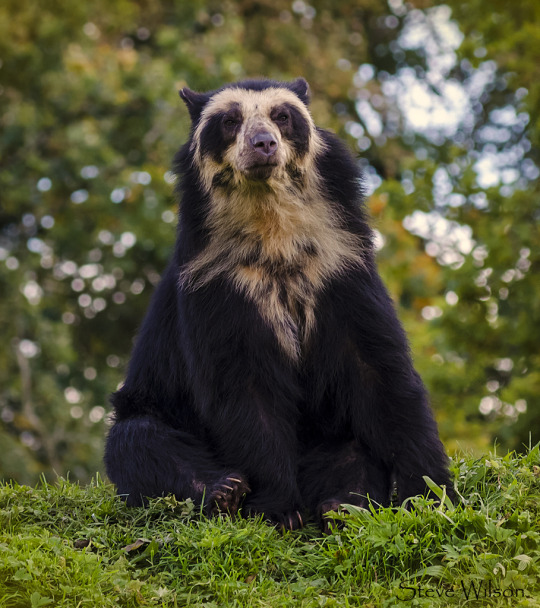
They have this name because of the white/cream markings on their face that can somewhat resemble glasses! As I said before, they're the only south american species of bear and is the last short faced bear alive, and most are found in the Andes. I like them because look at that cute little face and also latino solidarity. Fun fact, Paddington is a specteled bear considering he is from Peru.
Now moving on. She is beauty, she is grace, she is the largest species of bear AND the largest land predator, she is the Polar Bear
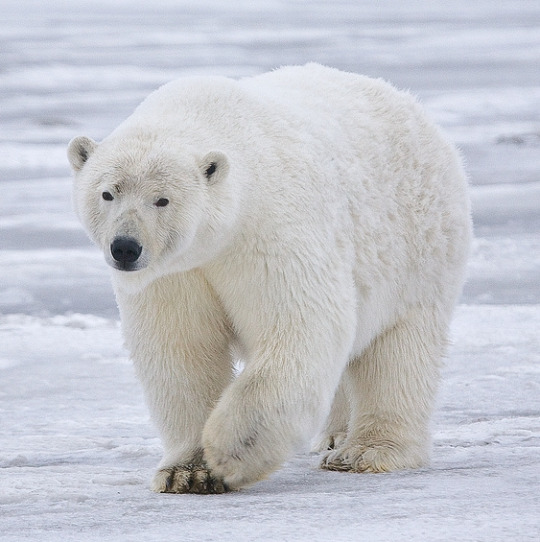

Few fun facts. Polar Bear's scientific name is Ursus maritmus (which would very roughly translate to sea bear) bc of how much time they spend swimming (which also means they are grear swimmers!). They are the most carnivorous of the bears, and imo, they will eat anything that is made of meat. The reason you see so many pictures of mother bears hugging their cubs is because of the cold. Althought, when they are old, their fur is great to protect from the harsh weahter, when they are young they are still vulnerable to it, so mama bears hugs her cubs to keep them warm. Oh and another thing, I discovered that bears can do this thing where they'll find a hole in the ice where seals come up to breath and they just...sit there and wait for it to happen (and they can wait for a LONG time). I love how cute they are when they're young and how fierce they are as adults, and honestly, look at their faces, I love them a lot.
Next, we're back in the american continent, this time with the American Black Bear
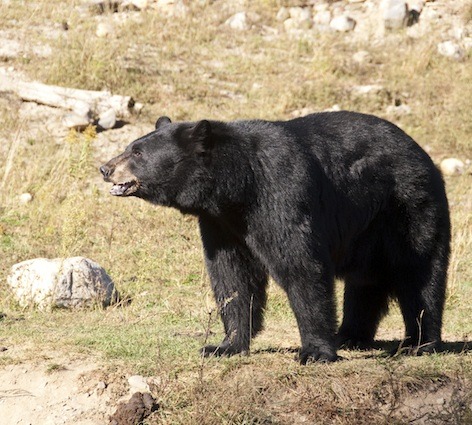

The american black bear has a lot of subspecies, which are mostly different colors than their signature black fur, they are omnivorous (and they will eat anything, like i've seen videos of them eating crabs and moths), and also, they are really good climbers! They are mostly found in North America, and they are a bit more chill, like if you ever encounter a black bear, you can scare it away by making yourself look big and making loud noises. They don't have the shoulder hump that brown bears have, and their ears are more prominent (which makes them so freaking cute.) Also, there has been black bears who have made their dens inside of trees, which i think is cool .
Lastly, this might be cheating, but it's a subspecies of the black bear, which is the Kermode Bear
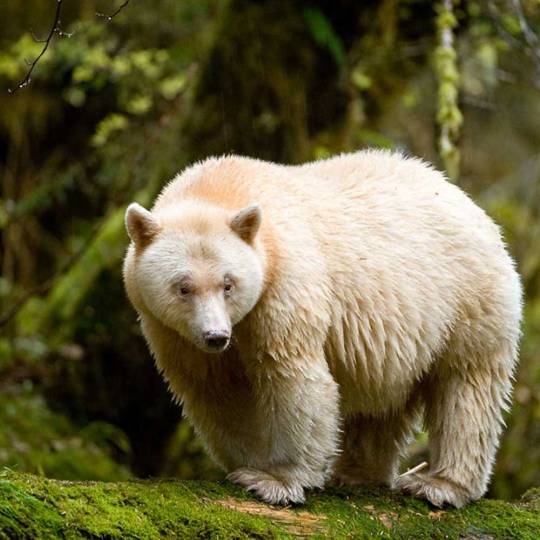

Mostly found in British Columbia, the kermode bear is also known as the spirit bear or the ghost bear, due to their white fur (important to note that they do not have albinism, look at their noses and eyes). The gene that makes them white is a recessive gene, so they are very rare. It's believed that they might be more succesful when hunting fish bc of their fur color, which could make the fish believe that they are a cloud. I love how different they are, how rare they are, and how beautiful they look, especially in contrast with the green around them.
As an honourable mention, I'll talke not about a species but an individual bear known was Grizzly 399.

(she's the mother in case you couldn't tell). She and her cubs can be found in the Yellowstone National Park, and she's the most famous brown bear in the world. She is famous for how many cubs she has had and raised (22 cubs and grandcubs) and she lives in proximity to humans (some believe that the reason she does that is to avoid the male bears when she has cubs). Also she has learned and taught her progeny how to avoid getting hit by cars, and she's a very old bear. (having 27/28 years, which trust me, for bears is a lot and she's still having cubs!). There have been hunters who claimed to have killed Grizzly 399 but they were all lies as she is very alive and well with her cubs. Also, forgot to mention, the reaosn she has had so many cubs is because while most bears give birth to 1 or 2 cubs, 399 often births twins and triplets, and she has had quadruplets which is very rare for most bears (and she raised them succesfully, which is even more impressive).
Anyways, these are my favorite bears.
#most info is from wikipedia and videos from national geographic bbc and others#pictures are from the internet#bears#longpost#polar bear#american black bear#kermode bear#grizzly 399#spectecled bear#in julie andrews voice *these are a few of my favorite bears
27 notes
·
View notes
Note
Thinking about ghouls as farmers/farmhands
I imagine that some types of kagune would be excellent for harvesting/ploughing with a nice bonus of no carbon emissions. I imagine ghouls, after criminalisation, would possibly even revolutionise farming/carbon footprint from farming?
(Although of course ideally a farm wouldnt till but even then for harvesting ghouls would be quite efficient.)
GHOULS IN FARMING AND FOOD PRODUCTION IS SO INTERESTING
Ghouls have always been a part of society, and regardless of where they are or how accepted they are, they’ve always had some hand in farming since, especially before industrialization, it was a good field for them. Their strength, senses, and kagune make them fantastic at cultivating, protecting, and harvesting food
In old world cultures where ghouls were always ostracized, they couldn’t be open about why their crops grew so well, so they tended to make up myths and stories about some ritual or another that makes their harvests so bountiful. They had senses of smell and pressure detection that could help them sniff out blights and pests, as well as semi-accurately predict rainfall, letting them handle issues before they got too bad. That, and their strength that lets them handle the physical task of planting and harvesting, helped them produce a lot of plants. But telling humans how they did it is off the table, so it was common for them to have a plowing Ox just for show and to say they said some prayer that helped
A lot of why ghouls thrived in farming is due to their regeneration. It may not be talked about much anymore, but it is DANGEROUS. Not just the modern machinery, but the strain of lifting and carrying. The illnesses carried by plants and animals. The workhorses and oxen that can just fucking kick you to death. The PIGS. It’s all risky work, and back before antibiotics, just one cut and you’re done for. A person who can not only survive almost any cut, but take a donkey kick to the face and get right back up to finish plowing the field is one of the most valuable people any farming village can have
Farming animals is more hit or Miss, because a lot of prey animals panic when they smell ghoul. Some ghouls still kept them and after enough time, or enough animals born around the smell of them, they could get used to it. Historically ghouls have run a lot of butcher shops because it was one of the best places to hide human meat before dna testing became widely available, so some animal husbandry skill was a good thing
Ghouls tended to make good shepherds. In especially rural areas, a lot of humans would collectively decide not to talk about the fact that someone is obviously a monster because they’re simply so fast and strong and don’t let sheep and cattle go missing or get hunted. If you were in Cold Ass Nowhere Ireland in 1635 and you had a shepherd who not only never loses a sheep but also eats the English, you’d pretend you didn’t notice either
In areas and cultures where ghouls were more accepted, they were essential to hunting and farming. North and central american ghouls had traits designed for taking down megafauna to supplement their diets, and their human companions could depend on them to bring countless Buffalo and deer home. Jungle subspecies had traits built for climbing, and were central to the harvest of high growing fruits and beans. A now likely extinct species native to Canada had semi aquatic adaptations and a thick layer of fat who were designed to hunt seals and small whales, and shaped the way any community lucky enough to have some survived. In places where ghouls were welcomed, they were so efficient at harvesting and hunting that land rarely needed to be developed for monocultures at all
When ghouls are decriminalized in more parts of the world, their physical abilities are allowed to shine again. Stories of ghoul farmers through history arise. Plenty of American and Polynesian communities (who had been telling people about ghoul’s contributions to their land and cultures for years and were having that brushed off as myth) can legally reintroduce the old practices of ghoul hunting and harvesting techniques. Smaller farms hire more ghouls once it’s clear that they can do machine level work without the expense of maintaining machines, and it’s one of the biggest ghoul hiring fields at the start of their legalization
Naturally, ghoul farming unions are quick to form. They can do machine level work, but are not going to risk being treated like machines for it. As with any Union there’s some backlash, but when it becomes apparent just how much better ghouls are at crop maintenance and harvesting, demands are met. It’s become a well paying profession, and has been good work for ghouls that struggle with the human grade education they were denied when they were younger, or ghouls who simply prefer to work outside doing something that benefits people
38 notes
·
View notes
Text
Facts about James Madison Vol. 1
(Because I’m bored and everyone should be enlightened with some James Madison)
James Madison walked with a small spring in his step, considerably to make himself appear slightly taller than he was
Because of the soggy and mushy climates surrounding William and Mary College in Williamsburg, James Madison instead went to the College of New Jersey (Princeton) for his health
James Madison, along with Thomas Jefferson and James Monroe, created the Republican Party (also known as the Democratic Republican Party or Jeffersonian Republican Party) in 1792
James Madison’s wife Dolley Payne was gifted a pet parrot named Polly— who was notorious for being aggressive towards humans (thus biting Madison’s finger in front of guests during one occasion)
James Madison personally knew Aaron Burr and Philip Freneau ever since they were all in college
James Madison and Alexander Hamilton, reported by a girl walking down the street, could once be seen playing with a neighbor’s pet monkey
James Madison had a long-lasting five decade friendship with Thomas Jefferson
James Madison would eventually have a fall-out with not only Alexander Hamilton, but also George Washington over the belief of federal government and a national bank by the early 1790’s
While Thomas Jefferson in France, he and James Madison would enjoy measuring animals, comparing them to their counterparts (North American animals compared to their similar species in Europe), and telling each other of their findings
James Madison, while he was in college, would last on a five-hour sleep schedule due to studying until he collapsed from a breakdown (this made him stay at the college for an extra year to restore his weakened health)
James Madison had never been good with marital relationships (being allegedly rejected by Freneau’s sister Mary and dumped by Kitty Floyd in the 1780s), but eventually married the 26 year-old widow Dolley Payne in 1794
James Madison was a MASSIVE fan of ice cream, along with his wife Dolley, whose favorite flavor was oyster
#founding fathers#colonial america#history#james madison#alexander hamilton#thomas jefferson#george washington#philip freneau#dolley madison#unfortunately the mary freneau situation is only rumored and doesn’t have any documents or real evidence#so it’s impossible to know if it was actually true#but oh well#gotta love paragraph facts woohoo
71 notes
·
View notes
Text
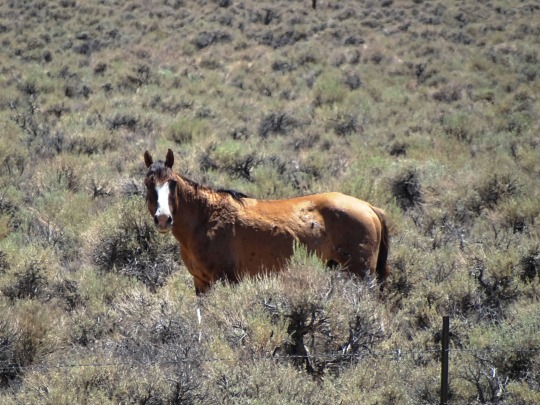
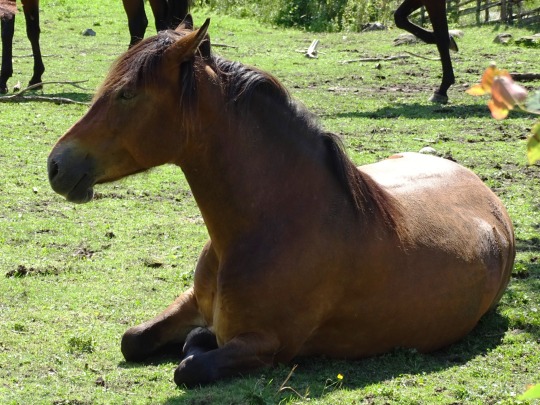
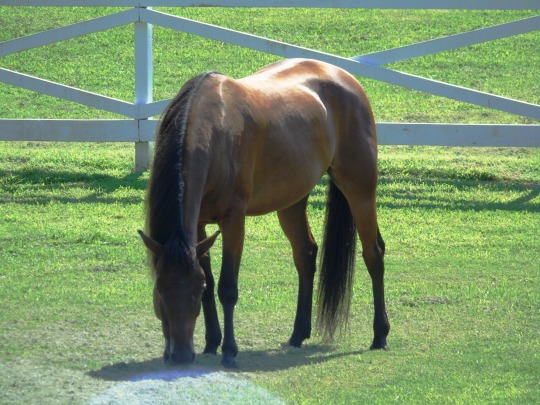

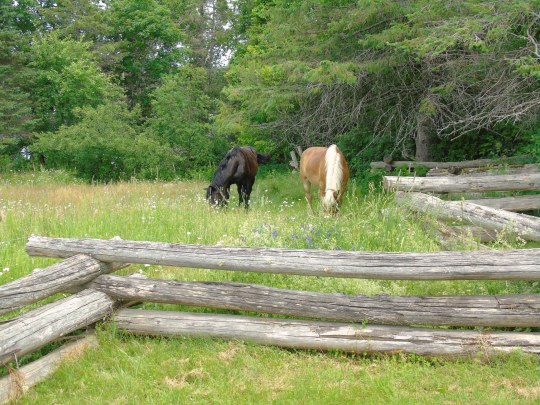
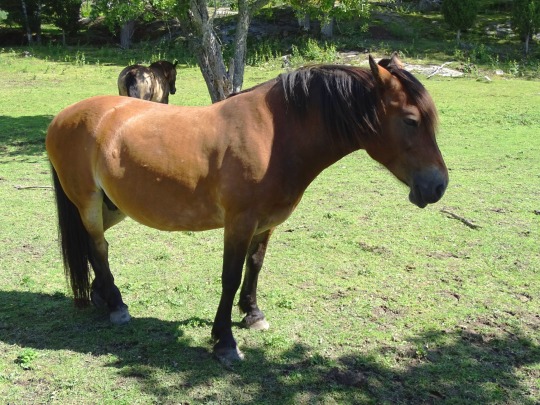
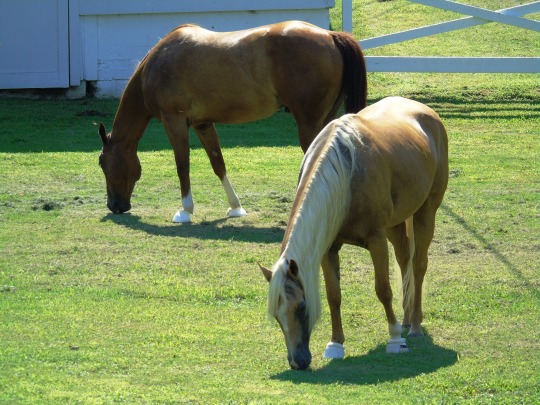
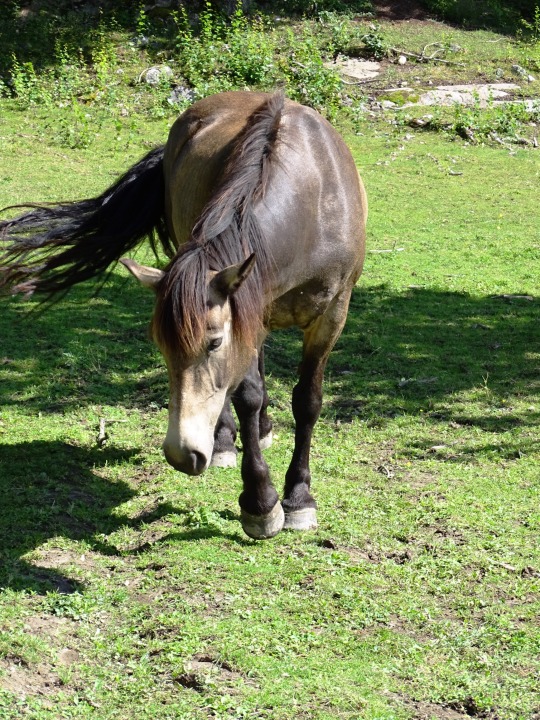

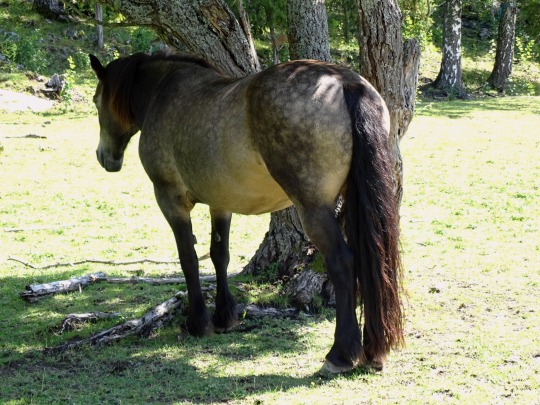
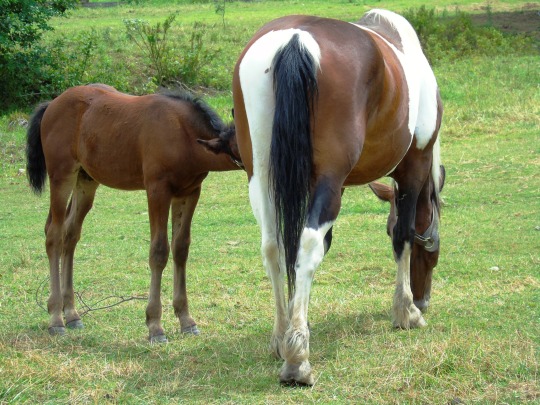
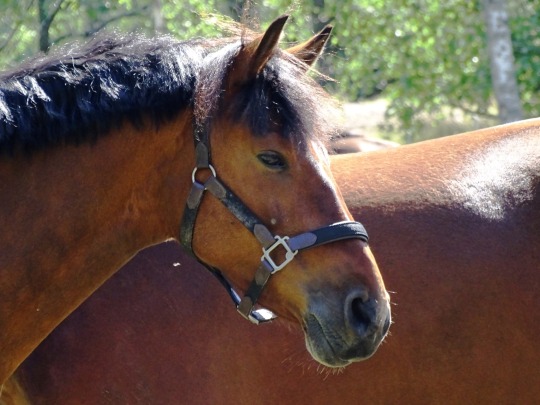
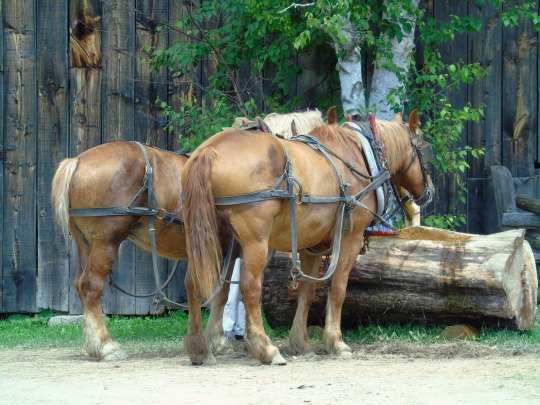
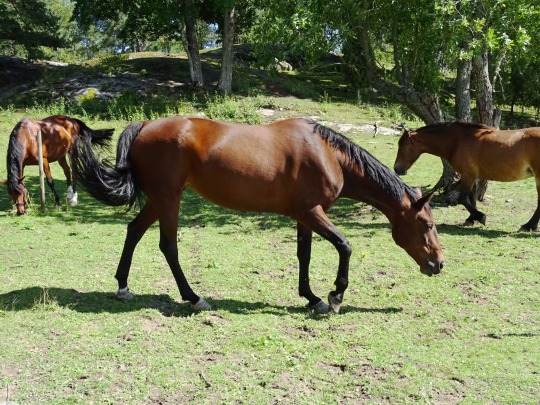

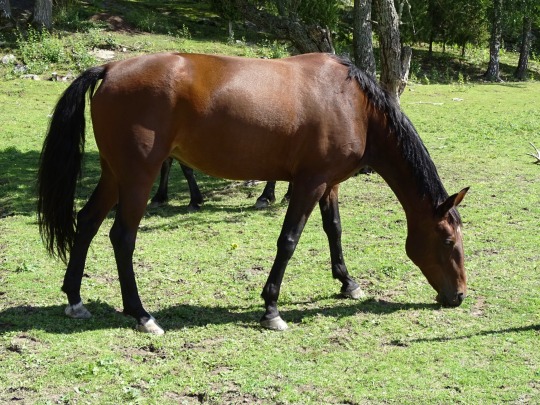
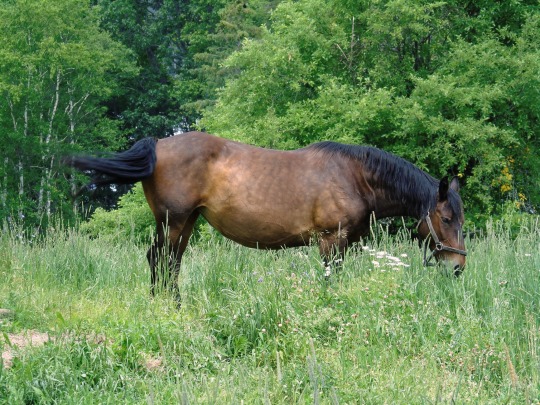
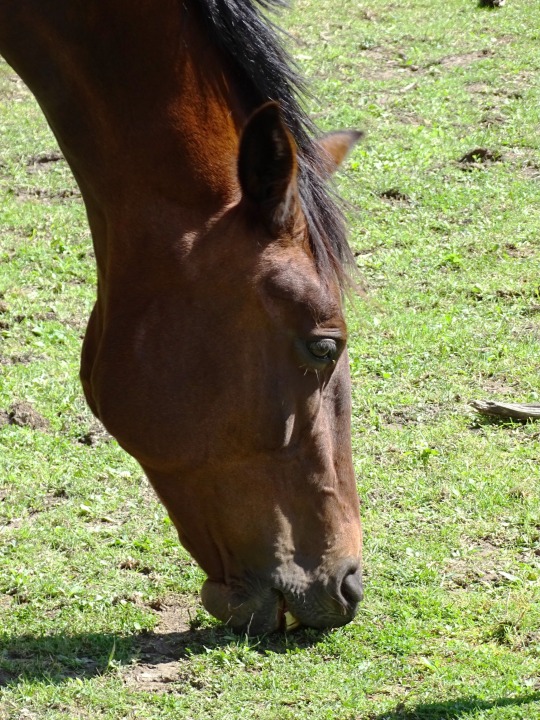
National I Love Horses Day
This National I Love Horses Day on July 15, we are not going to tell you to hold your horses because today is about going all out for horses. Horses are one of the most beloved and adored animals in the world. In fact, horses are in fourth place on the list of the world’s most popular animals. Horses have been very important for humankind for a while now, having been domesticated since ancient times. Due to their versatility, horses are used in a variety of fields, from agriculture and transportation to entertainment. Horse racing and show jumping also see horses showing off in front of cheering crowds.
History of National I Love Horses Day
National I Love Horses Day was created to highlight the importance of the animal in human history and development. Horses have been around for around 50 million years and they were domesticated by nomads in 4000 B.C. The animal is believed to have originated from North America, with increased traveling and globalization taking it to other parts of the world. These early horse breeds later became extinct on the American continent. According to the Integrated Taxonomic Information System, today, there are many other horse breeds but all of them are believed to have descended from Equus caballus, including the populations of feral horses in the wild. Horses have 350-degree vision and are extremely social. They roam around with their own species as well as other animals. Furthermore, their aptitude in socializing makes them easy animals to breed.
In the old days, horses were domesticated and farmed for their meat and milk. The animal was an important source of sustenance in the central Asian steppes, where, to date, horses are bred for consumption. In some cultures, a mare’s milk was also fermented and enjoyed as an alcoholic drink. As human populations increased and commercialization started taking over, horses began being used to cultivate the land and other general agricultural settings. Because of the strength and endurance they displayed, horses were also being used for the transportation of goods and people over long and short distances. Over the years, horse racing and show-jumping contests also gained the attention of the public.
National I Love Horses Day timeline
4000 B.C. Earliest Recorded Instance of Horse Domestication
The earliest records of horse domestication are found, particularly in areas of Ukraine and Kazakhstan.
1992 Przewalski Reintroduced in the Wild
After believing the species to be extinct for over 20 years, the Przewalski's horse breed is reintroduced into the wild through conservation efforts.
1993 American Secretary Appointed for Wild Horses
President Clinton nominates the secretary of the U.S. Department of the Interior, Bruce Babbitt, to oversee the care for wild horses in America.
2005 Legislation for Unadopted Horses
Legislation is passed in order to allow unadopted horses to be taken to slaughterhouses after an allotted period of time.
National I Love Horses Day FAQs
What day is National Horse Day?
National Horse Day is on December 13.
What is a Hippophile?
A hippophile is a person who loves horses.
Can horses love humans?
The love you feel for your horse may not be exactly reciprocated. But a horse can certainly feel — and give — affection.
How To Celebrate National I Love Horses Day
Show some love
Ride a horse
Spend a day with horses
Horses and humans go way back. Show some love to these amazing animals that have been our companions in many fields. They have helped feed us, travel through familiar and unfamiliar terrains, and entertained us endlessly on the racing fields and stage.
If you’ve never ridden a horse before, this is your chance to grab the opportunity. Book yourself a spot on a horse riding tour, and then just sit back and enjoy. Feel the wind in your hair. Riding a horse is an experience you must try at least once.
Find horse farms in your area and go and spend a day with horses. You help feed them, brush them, and take them for a trot or a light canter. Horses are friendly creatures and spending time with them can be very therapeutic.
5 Facts About Domestication That Will Blow Your Mind
One of the earliest domesticated animals
Pigs/cattle for more settled communities
Age-old eggs
Changes in genes for easier domestication
Darwinian documentation for behavior patterns
Starting in around 7000 B.C., dogs were one of the earliest domesticated animals, for reasons related to protection from other humans and animals.
Historians trace the domestication of pigs and cattle back to around the same time goats and sheep were domesticated, but the former are believed to have been domesticated in communities that were already settled.
Microfossil embryos of chickens found in China are believed to be 60 million years old.
Changes to the gene markers of an animal’s endocrine system can help them be less fearful of humans.
Charles Darwin documented different behavioral patterns in domesticated animals compared to their non-domesticated relatives.
Why We Love National I Love Horses Day
It’s a celebration of horses
It’s a celebration of companionship
It’s a celebration of history
While we do not need to introduce you to the incredible qualities of the animal, here are some of their most beloved attributes: Horses, much like dogs, are loyal animals. They also have amazing stamina, strength, and speed that enable them to endure long distances without breaking a sweat.
Horses are social creatures with a great ability to read and remember the people around them. While they have helped humans in a number of areas, they have also made great friends. Horses can understand when you are stressed, angry, or happy, and they can comfort you when needed.
If you want to trace the history of human civilization, researching horses is a good start. This animal has been an active participant in agriculture/farming, travel, transportation, entertainment, and warfare. People have been domesticating and employing horses for generations.
Source
#north Swedish horse#wild horse#Graceland#Tyresta National Park#travel#original photography#vacation#tourist attraction#landmark#landscape#Kings Landing Historical Settlement#New York City#Memphis#New Brunswick#animal#Tennessee#Stockholm County#Nevada#Sweden#National I Love Horses Day#15 July#NationalILoveHorsesDay#USA#cityscape
7 notes
·
View notes
Text
hey . hey hey. are you like me in the fact that you used to like httyd as a kid
and then when the hidden world came out you really didn't like it and you didn't know why
well a few weeks ago i got my little goblin hands on the httyd hidden world art book and then realized. O h . The reason i didnt like it was because they were telling a different story than the one i wanted to hear. they wanted to tell a story about The Wild and Nature and i just wanted to see the funny dragon and his best friend be best firends
so i am going to start brain dumping about my httyd modern au rewrite
here's some out of context fun facts !!
toothless really fucking loves humans. he is dragon autistic about them
hiccups real name is Hayden but hiccup was a nickname that Just Kinda Stuck
toothless and the lightfury are siblings. she is so tired of his shit. theyre Worsties
hiccup is aroace
the hidden world is a universe parallel to our own where dragons live. we get the cryptid/ghost hunter vibes :333
they all get to use magic and i think im gonna give hiccup a dragon form or something (pleasing the child in me who wanted hiccup to Be Dragon Also)
lightfuries are the "main" species, an exclusively albino variant that survived well due to their semitranslucent skin allowing them to become invisible. nightfuries are melanistic, very rare versions (a subspecies)
they're derived from a common ancestor, a gray dragon that was probably called sky furies or something
since i'm american (unfortunately) the whole story takes place on the north shore bc there's lots of nordic stuff there. new berk (hiccups town) was made by viking settlers thousands of years ago and that's why they all have funky viking names because Honoring Heritage
dragons :3333
16 notes
·
View notes
Text
CoD The Other Good Guys Bear! Edition
What if the rest of the good guys in call of duty were bears? Part 2 - see Part 1 for 141 as bears
More bear facts! Cause bears are truly the best! 🐻💯
Alejandro: Mexican Grizzly Bear*
Ursus arctos nelsoni - now Ursus arctos horribilis

*depiction of what a mexican grizzly bear may have looked like alive
A now extinct subspecies of the grizzly bear that once inhabited northern Mexico. Due to its predation on cattle farms, they were considered pests and hunted by farmers. By the 1960s there were less than 30 individuals remaining. In 1974 the last known individual was shot in Sonora.
It was smaller than grizzly bears from the United states and Canada, and its colouration was said to range from a pale yellow to greyish-white with a darker undertone, though some individuals were described to be darker and reddish brown.
Due to its silvery fur, it was called 'el olso plateado' (the silvery bear) in Spanish, though it's name in the Ópatas language (an indigenous Mexican people's) was 'pissini'.
Rudy: Spectacled Bear "Andean Bear"
Tremarctos ornatus

The last remaining short-faced bear, native to the Andes Mountains in northern and western South America. Though all bears are omnivores, the spectacled bear has a mostly herbivorous diet with only 5-7% of their diet being meat.
The bear is named after it's distinctive eye markings, though not all spectacled bears may have such markings. Individuals can have highly variable fur patterns making it relatively easy to distinguish from one another.
It's short face and broad snout is thought to be an adaptation to a carnivorous diet despite it's herbivorous preferences.
Paddington Bear is said to be a Spectacled Bear from Peru.
Farah: Asian Black Bear "Moon Bear"
Ursus thibetanus
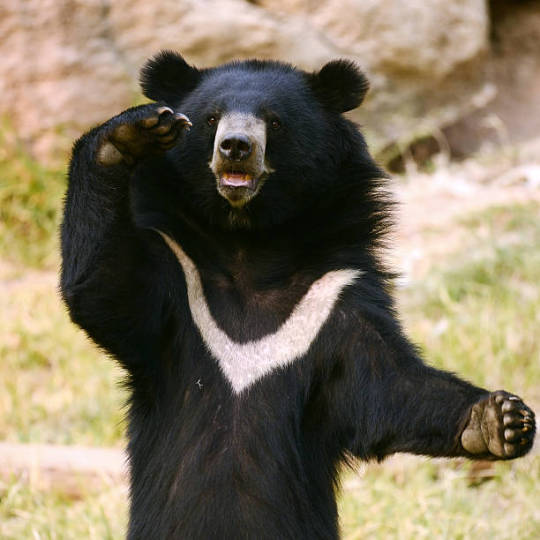
A medium sized bear native to Asia and highly adapted to arboreal life. It can be found in parts of Korea, China, Japan, eastern Russia, the Himalayas, southeastern Iran and northern India. It is listed as vulnerable due to deforestation and poaching for its body parts (used in traditional medicines).
The name 'moon bear' is given due to its distinctive creamy white cresent fur patch, though in some individuals it is "V" shaped. It has a powerful upper body stronger than it's lower limbs and are known to be the most bipedal of bears.
It has a reputation for extreme aggression despite their reclusive nature and there have been documented reports of unprovoked attacks. They are said to be more aggressive than the Eurasian Brown Bears that may cohabit the same areas and the American Black Bear.
Alex: American Black Bear
Ursus americanus
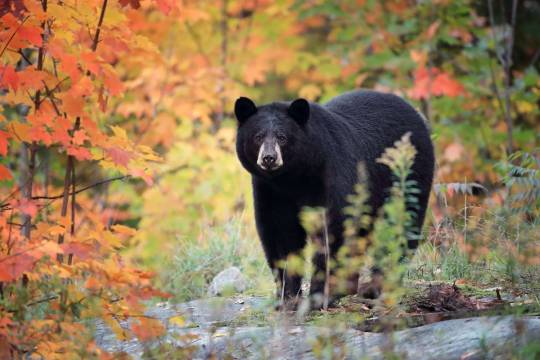
Alongside the Brown Bear, it is one of the only Bear species not threatened with extinction.
Despite living in North America, it is more closely related to the Asian Black Bear and Sun Bear than Grizzly Bears (North American Brown Bears) and Polar Bears. It's ancestors are thought to have split off from the Sun Bear.
Black Bears are distinguished from Grizzly Bears who may cohabit the same area, with their longer tall ears, straight face profile, shorter claws and lack of distinctive hump.
Teddy bears, Winnie-the-Pooh, and Smokey Bear are all inspired by the American Black Bear.
Nikolai: Polar Bear
Ursus maritimus
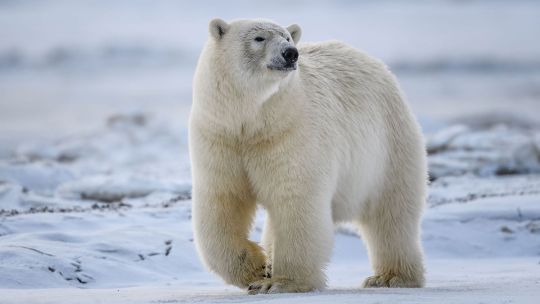
A large bear native to the Arctic. It is closely related to the Brown Bear and can hybridise with them though this is rare and not often seen. (See Grolar Bears)
They are the most carnivorous of all bear species (hypercarnivores), specialising in hunting seals through ambush attacks. Polar Bears are usually solitary but can be found in groups on land. They can form stable 'alliances' based on dominance hierarchies outside of breeding seasons with the largest males at the top.
It's common name was given in 1771, and was previously referred to as 'white bear', 'ice bear', 'sea bear', 'Greenland bear' in 13th - 18th century Europe. The Netsilik cultures (Inuit) named it 'nanook' and have several additional different names for them depending on sex and age of the polar bear.
Laswell: Kodiak Bear "Kodiak/Alaskan Brown Bear"
Ursus arctos middendorffi

Named after it's habitation of the Kodiak Archipelago in southwest Alaska, the Kodiak bear is the largest subspecies of Brown Bear, with some individuals comparable to the Polar Bear in size.
An island bear, it is 1.5-2x larger than it's mainland cousins the grizzly bear, though physically and physiologically, the two bears are very similar.
Due to its tendancy to feed in dense groups, it has thought to have developed more complex social behaviours (in comparison to mainland grizzly bears) to minimise infighting/fatalities via both verbal/ body posturing and social structures.
+
All info taken from wiki. Please let me know if ther any mistakes.
#cod mwii#cod mw2#call of duty modern warfare#cod mwiii#alejandro vargas#rudy parra#rudy cod#farah karim#farah cod#alex cod#nikolai cod#kate laswell#laswell cod#bears#bear facts
33 notes
·
View notes
Text
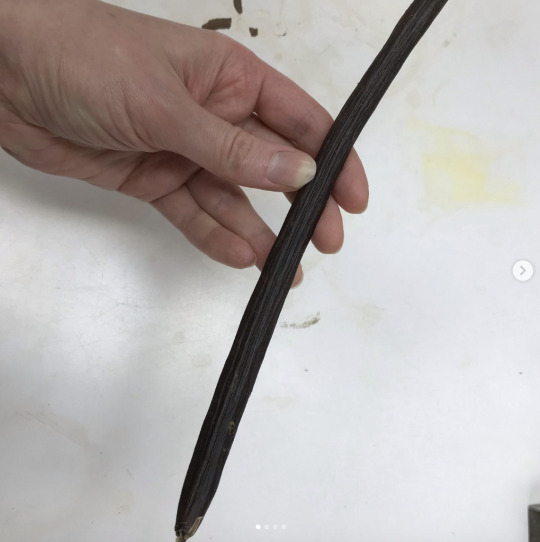

Today as I was walking to work, I passed by a Catalpa tree that grows wedged in between buildings and overspreads a parking lot. I wanted to get a seed pod so I could try germinating some seeds and grow my own Catalpa, but sadly all the seed pods on the ground were broken and muddy. All the pristine seed pods were high out of reach in the lofty boughs of the Catalpa. In disappointment, I muttered, "I wish I could get an intact seed pod". Suddenly, I heard a loud "crack" and a perfect clean seed pod fell from the tree and landed at my feet. I was so astonished that I said "thank you so much, Catalpa tree!" out loud. It makes one wonder if there's something to the old mythology of Dryads, Huldra, and Yakshini after all...
With its white orchid like flowers and parasol leaves, the Catalpa is a popular ornamental tree in the UK. This tree is commonly called the "Indian Bean Tree", which has misled many people to think it comes form India. In fact, the Catalpa is native to the Southern USA and the "Indian" in the name is the outdated term for Native Americans. Relatives of this tree are found in North America, the Caribbean, and East Asia.
The Catalpa has a curious relationship with a caterpillar. Catalpa trees are relatively pest and disease free due to the high concentrations of iriod glycosides in the plant tissue. The Catalpa Sphinx Moth (Ceratomia catalpae) caterpillars exclusively feed on the Catalpa and sequester the toxins in their own bodies, making the caterpillars unappealing to their usual predators. Research shows that one species of Catalpa (C. speciosa) reacts to caterpillar damage by releasing nectar from glands that attracts ladybirds and ants, which prey on the caterpillars.
#katia plant scientist#botany#plant biology#plants#plant science#nature#seed pods#trees#tree seeds#bean#catalpa#flowering tree#ecology#caterpillars#sphinx moth#toxins#native americans#dryad#tree spirit#serendipity#plant facts#plant scientist#plantblr#seeds#grow your own#botanical#plant aesthetic
21 notes
·
View notes